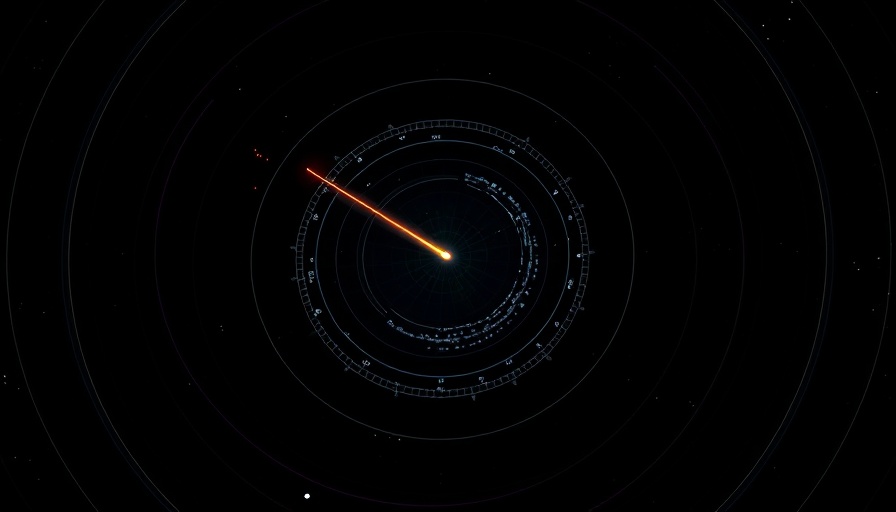
NASA's Exciting Discovery: An Interstellar Comet in Our Solar System
NASA recently made headlines with the discovery of 3I/ATLAS, an interstellar comet that has ventured into our solar system from beyond. Detected by the Atlas telescope in Chile, this comet is officially the third known object to cross the borders of our solar neighborhood. However, fear not — it’s maintaining a safe distance from Earth as it travels through space.
Understanding 3I/ATLAS' Journey Through Space
The newly discovered comet is a stunning discovery for astronomers: it currently resides about 416 million miles from the sun, positioned in the vicinity of Jupiter. NASA confirmed that while 3I/ATLAS will come to its closest approach to the sun this October, it poses no danger to Earth. Instead, it will glide safely between the orbits of Mars and Earth, with a minimum distance of approximately 150 million miles from our planet.
The Beauty of Interstellar Visitors
3I/ATLAS joins the ranks of two previous interstellar visitors: the famed Oumuamua and 21/Borisov. Oumuamua, discovered in 2017, fascinated scientists with its unique elongated shape and enigmatic behavior; it was initially classified as an asteroid but later interpreted as potentially being a comet due to its unexpected characteristics. Subsequently, 21/Borisov was identified in 2019, adding more intrigue to our understanding of interstellar objects.
Why Is This Significant?
Discovering interstellar comets like 3I/ATLAS reshapes our vision of space and underscores the significance of NASA's exploration efforts. Understanding these comets provides insight into the early solar system's environment, offers clues about the formation of planets, and potentially reveals what lies beyond our cosmic neighborhood. Each interstellar object enhances our grasp of space dynamics, building a profound picture of the universe and our place within it.
Future Observations of 3I/ATLAS
As global astronomers monitor 3I/ATLAS, they will study its size and shape, a critical step toward knowing more about its composition and behavior. Currently, telescopic observations will be possible until September, and the comet is expected to reappear on the other side of the sun in December. This visibility window offers a unique opportunity for both amateur and professional astronomers to engage with this celestial phenomenon.
Connecting the Dots: A Broader Context in Science
The discovery of 3I/ATLAS is a reminder of how much there is to learn about our universe. With each interstellar visitor, we challenge our understanding of physics, astronomy, and the capacities of modern technology. As people find fascination in these cosmic travelers, it also inspires the next generation of scientists and dreamers to explore space. In a world where trending news today often revolves around more terrestrial concerns, this cosmic development offers a refreshing shift in narrative, inviting us to turn our gaze skyward.
Your Role as a Space Explorer
So what can you do with this newfound excitement over interstellar phenomena? Stay informed on trending news in the world, particularly in science and astronomy, as new discoveries can shift our understanding rapidly. Engage with communities, forums, and social media platforms discussing space observations — it’s an opportunity to delve deeper into the mysteries of the cosmos.
Conclusion: What Lies Ahead in our Cosmic Neighborood
The recent finding of 3I/ATLAS is more than just a comet; it’s a portal into the enigmatic universe that encapsulates us. As we gear up for more observations and research, remember that our quest for knowledge in astronomy puts the vast enormity of the universe into perspective. It’s crucial to stay connected and informed on these astronomical wonders as they unfold. Keep an eye on trending news to become part of the cosmic narrative!
 Add Row
Add Row  Add
Add 




Write A Comment